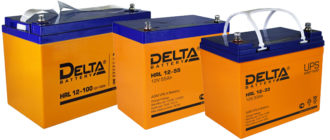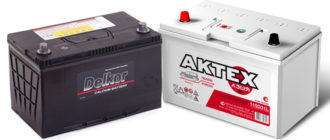Storage of a lithium battery is a very difficult undertaking. Unlike other power sources, they do not tolerate inactivity for a long time when fully charged or at full power consumption. There are other features of long-term storage of such products, which will be discussed in detail in this article.
Content
How to identify a lithium-ion battery
If the original marking is preserved on the surface of the battery, then it will not be difficult to determine whether the current source belongs to lithium-ion technology. In this case, there will be a designation Li Ion, which is applied to one of the sides of the chemical source of electricity.
If during the operation all the inscriptions are erased, then you can determine the lithium-ion battery by the device where the battery was installed. It is enough to find the instructions for the gadget and study it in detail to find out exactly what current source it works on.
Varieties and sizes
Lithium-based batteries are available in almost all sizes of rechargeable power supplies. Most often, various portable devices are used to provide electric current, the following varieties are used:
For the operation of various power tools, for example, a screwdriver, expensive cameras and mobile phones, original batteries are used that are suitable only for this model of electrical engineering.
What is their shelf life?
If a lithium ion battery If it is stored correctly, then without a serious reduction in the main electrical parameters, such a product can be stored for up to 5 years. This is the maximum period and only high-quality batteries that were in conditions as close to ideal as possible can withstand it.
If the battery is of poor quality or to maintain operability, it is constantly recharged throughout the entire storage period, then the battery will significantly lose capacity.
Low voltage at the battery terminals will also lead to a quick failure of the cell. For these reasons, before placing the lithium-ion product in storage, it is recommended that you familiarize yourself with the basic rules for preserving such batteries.
Storage rules
If you decide to keep the lithium-ion battery for a long time, it is important to carefully study the rules for the long-term placement of such products without connecting to electricity consumers.
Preparing the battery for storage
The most important characteristic when storing lithium-ion batteries is the degree of battery charge. As a rule, such products in a fully charged state are able to generate a voltage of 4.2 V.
A fully discharged battery is considered at a charge level of 2.8 V. It is easy to calculate that the average level of this indicator will be 3.5 volts. This is the optimal value of the indicator of charge.
If the manufacturer recommends long-term storage at a higher charge level, for example, 70%, then in this case, at the stage of preparation of the battery, it should be charged to about 3.8 Volts.
If other models of lithium-ion batteries with different values of the voltage of the full charge and discharge are used, then the necessary indicators of this parameter are calculated in a similar way.
Despite the well-made case, the lithium-ion battery can undergo oxidation (especially contacts), so it is recommended to place it in a plastic bag before long-term storage. To prevent the negative effects of ultraviolet rays, an opaque plastic must be used.
In order not to miss the deadline, you can put a note with the start date of storage in the battery storage bag. Thus, it will be possible to re-preserve the product on time and use it for its intended purpose.
Storage and room requirements
The shelf life of lithium-ion batteries can be significantly reduced if such products are placed in unsuitable conditions. First of all, it should be noted the negative impact on the batteries of high temperatures.
Storage of lithium-ion batteries at a temperature of +40 degrees Celsius can significantly reduce the service life, and at +60, irreversible degradation processes are formed inside the cell.
For this reason, when placing lithium-ion batteries for long-term storage, it is forbidden to place them near heating appliances. The presence of direct ultraviolet radiation also leads to excessive heating of the surface of the power source, so leave the product for a long period away from sunlight.
Frost lithium-ion batteries also do not tolerate well. The substances included in the electrolyte begin to freeze even at a small negative temperature, which negatively affects the capacity of the product.
Of course, this process is reversible, but only on condition that under such conditions electricity consumers will not be connected. Significant fluctuations from negative temperatures to positive values also negatively affect the state of the battery.
Excessive air humidity should also not be observed in the room where lithium-ion batteries are located for long-term storage. Contact corrosion is one of the most serious effects of these battery conditions.

What is forbidden to allow during storage
Regardless of whether the old battery is sent for long-term storage or a new one, it must be charged to the required level. Restoring the charge to 100% capacity is also not recommended. The optimal value of this parameter can be called 60 - 70%, the minimum - 40-50%.
If storage is carried out in winter, it is strictly forbidden to immediately use the product after a period of storage. Leave the battery at room temperature for at least 12 hours.
Have questions or have something to add? Then write to us about it in the comments, this will make the material more complete and accurate.







